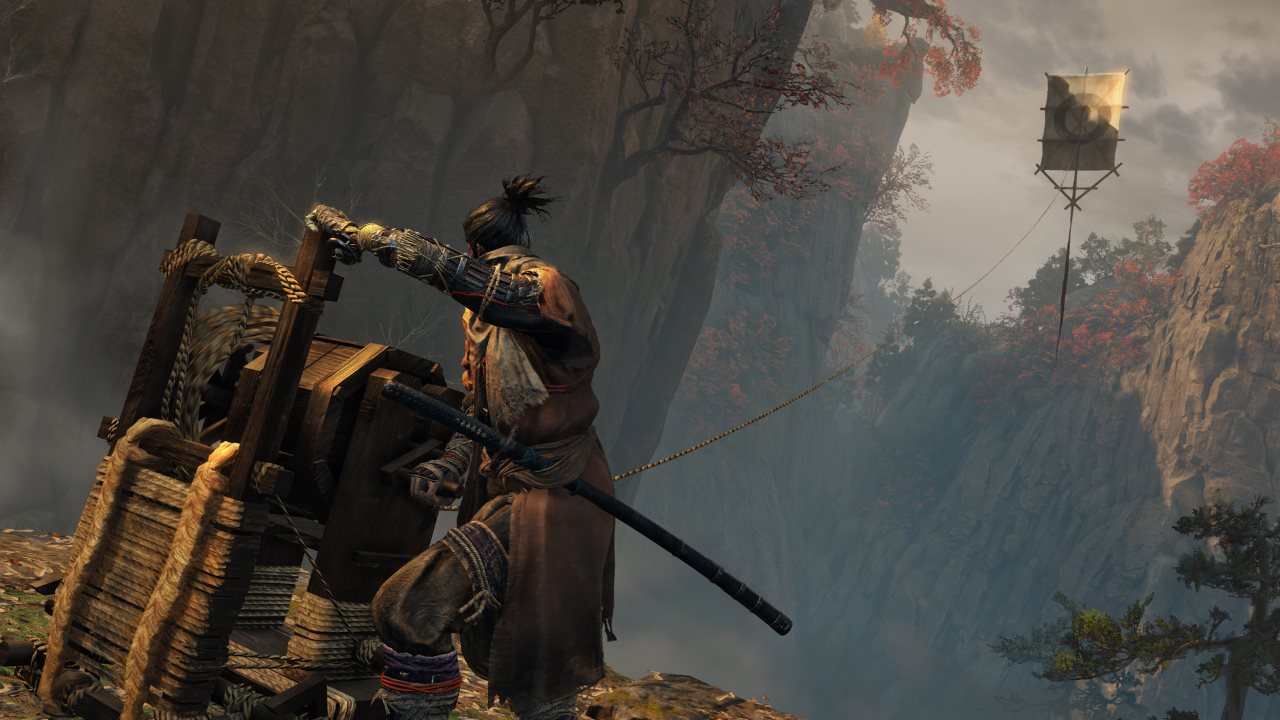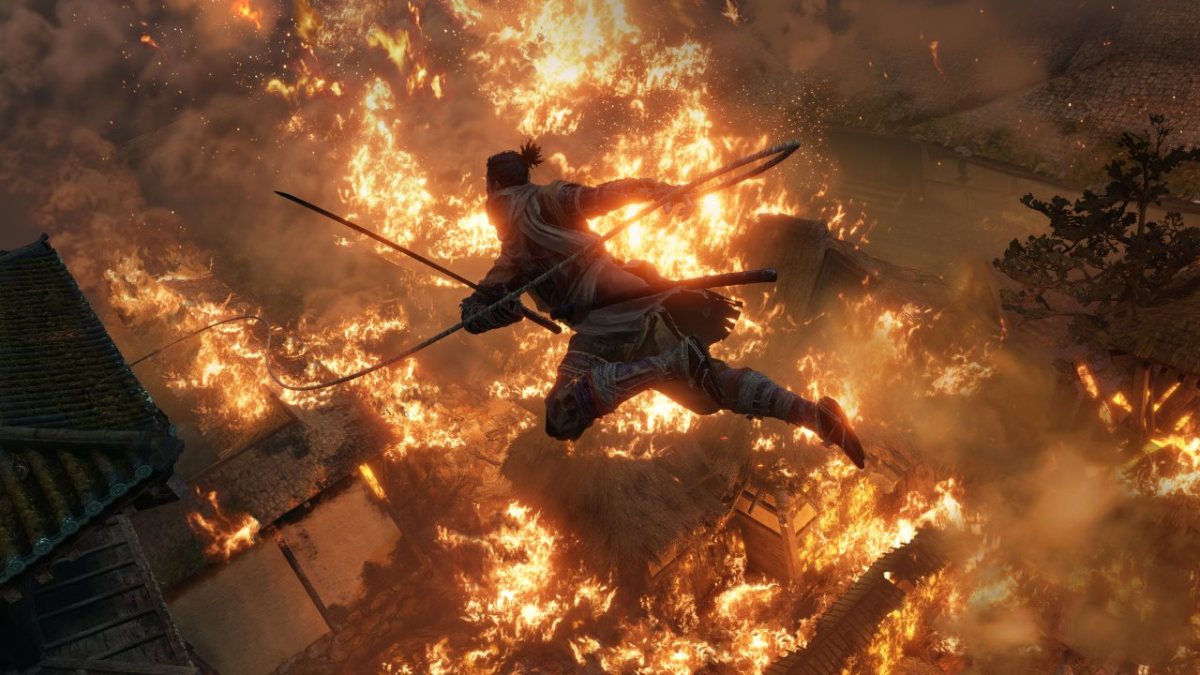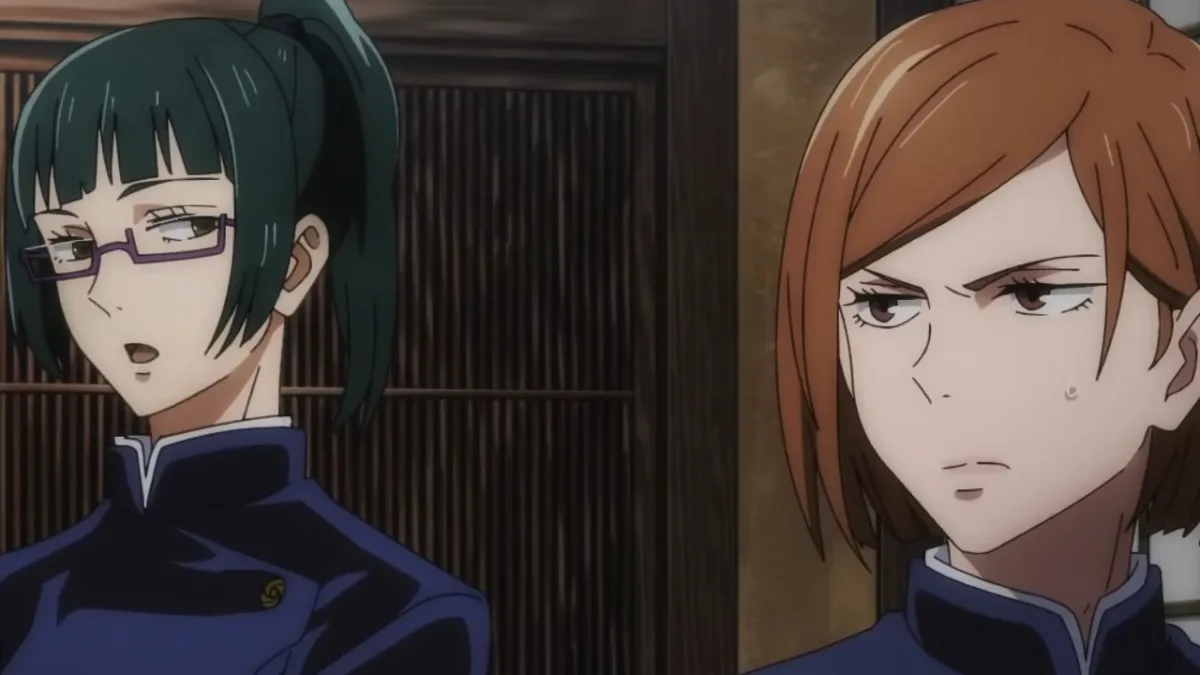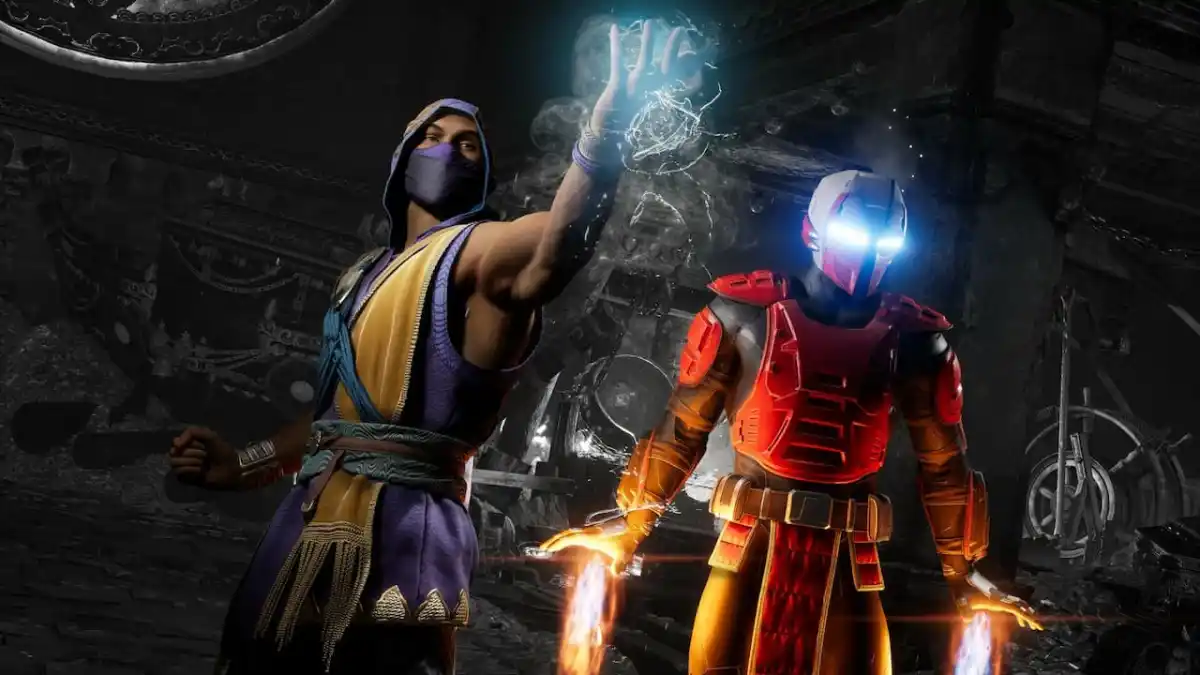Jumping headfirst into a new FromSoftware game is a daunting experience. Known for the brutally difficult Souls series, their games typically involve a whole lot of figuring out mechanics, understanding enemy patterns, and a ton of dying. With Sekiro: Shadows Die Twice that was all true once again as I dove into the game at a recent preview event. Getting to sit down and play Sekiro for a solid three hours gave me only an early slice of what players will eventually experience. However, it was enough to show that fans are right to be very excited for this release.
The early moments of Sekiro: Shadows Die Twice feel both familiar and alien. As someone who’s enjoyed the Souls series, but not gotten deep into its lore or higher level mechanics, Sekiro felt like a more accessible game right out of the gate. As I jumped on, playing on a PS4 Pro at a NYC based preview event for which Activision paid for my travel expenses, the game played more like a typical action-adventure title. There were cutscenes that introduced characters, told a story, and set the stage for what was to follow. At least, that’s how it felt initially.
This is a FromSoftware game through-and-through though, which means once that initial veneer wore off I was left with a challenging and open adventure for which I had to put in some real effort. During the opening moments you are introduced to the game’s central characters and your main purpose which is to protect/rescue the Divine Heir, a young boy with some heavy mystery surrounding him. Once these short intros are finished though, players are dumped into the central hub of the game and pretty much left to find their own way.
Sekiro: Shadows Die Twice Gameplay Preview Impressions
For the event there were only so many levels we could explore. There was the areas surrounding this hub, called the Dilapidated Temple, along with a few levels that you encounter within those first few hours. Exploration has played a large role in all of From’s titles, but with Sekiro it feels magnified. As a shinobi, your character is much more capable than the knights of Dark Souls. You move faster, and can climb all over the environment. A wall-jump and ledge grabbing system plays heavily into how you navigate the map, and these changes bother large and small craft a totally new experience within the framework that From has already established.
Stealth is a huge part of the Sekiro experience, though it’s also clearly not a stealth game
The biggest shifts in the formula come in both navigation and combat. As I said, you play as a very capable shinobi, marking a shift from the random undead knights of Dark Souls. Shortly after you begin, your character loses their left arm, which is replaced by a prosthetic with many uses. The first and most important of these is a grapple which not only expands your stealth options, but changes the way you look at maps as a whole. No longer do you see cliffs and have to wonder how to get there, with a few jumps and a nearby grapple point you can get from one place to another quickly, easily, and stealthily.
Stealth is a huge part of the Sekiro experience, though it’s also clearly not a stealth game in and of itself. Rather stealth is how you approach combat initially, with a constant backup plan to get more action-heavy as needed. And it will be needed, much more than I initially thought in fact. While you can enter an area and take out a few random guards or enemies stealthily, chances are if this is your first time there you will be spotted at some point. This will often feel overwhelming as enemies swarm your location and take you out in just a couple successful blows. But if you’re quick and skilled you can handle almost anything the game throws at you.
Yes, even multiple enemies at once can be taken out with the right amount of patience and skill. Sekiro’s combat is a vast departure from Dark Souls, but it still has the same spirit. You’ll be dodging, blocking, and jumping all over the place as you look for your opening. This time around, the combat is focused on Posture, a mechanic that takes some getting used to. A yellow bar appears above any enemy’s head as you do battle, filling this will open them up to a devastating attack that usually serves as a killshot.

How do you fill it up? By being very good at Sekiro’s unique combat style. Blocking at just the right time is your best bet, though other actions can also raise the Posture gauge. With any equally matched foe, such as the guards that dot the landscape, you typically want to focus on timing your blocks just right, then moving in for a few quick, successive strikes when you create an opening. Do this once or twice and they’ll falter, letting you deliver the killing blow.
However, getting too obsessed with this led to some of the toughest battles I had in Sekiro. For example, smaller enemies showed up partway through one level, and I went into the groove of waiting for their strike. However, they hit so fast this was tough to accomplish. Instead, the best strategy with them was to overwhelm them with sword strikes as quickly as I could. It felt wrong, but worked perfectly. Likewise, other foes use longer spears and require less blocking and more dodging to find your opening and fill up their Posture gauge. Each enemy is a unique puzzle just like Souls fans have come to expect, and with Sekiro’s expanded combat abilities those puzzles have near endless complexity to them.
Sekiro: Shadows Die Twice is not an RPG. You don’t create a character, and you don’t really level up. But that doesn’t mean you don’t improve and enhance your abilities. New prosthetic attachments play a massive role in the game, even serving as the singular method of killing certain bosses, if you don’t feel like dying dozens and dozens of times. One that was attainable in just these first few hours involved throwing fire in front of you, either lighting enemies up or distracting them. Getting this opened up a plethora of new combat mechanics that reworked how I saw combat as a whole. It’s clear that,even without the baser RPG elements, players will progress significantly in both their abilities as well as their own skill in the game, fitting the pattern of previous FromSoftware titles.
The core gameplay of Sekiro: Shadows Die Twice is an odd thing to wrap your head around at first. It looks like a typical action-adventure game, and playing that way will get you decently far. After just a few short hours though you will hit a wall, pretty hard in fact. This isn’t a fault though, in fact it’s what separates Sekiro from the myriad other action games out there. You have to be good to get by, and you have to be dedicated to getting better when you need to. In this demo I died dozens of times, both to bosses and random enemies that got the better of me. While the expanded mobility mechanics do allow for alternative options, such as climbing a cliff and rappelling to safety when a battle isn’t going your way, this is only a temporary reprieve. You’ll have to go back to that fight and you’ll need to have a better strategy to survive.

When you do die, there is always the titular revival mechanic. Yes, death is not the end in Sekiro, though it can be pretty tough to recover from. This early in the game you have one revival at a time, recharged by visiting a Sculptor’s Idol that serves the same purpose as DS’s bonfires. When you die, the choice is yours whether to revive and reenter combat or let the game reload you to your previous checkpoint. You can use this to surprise enemies who back away when they think you are dead, though this was tougher to pull off than I initially assumed. Mostly it just got me back into the fray, with the outcome determined by whether or not I had learned from my mistakes. Typically I had not.
And of course, none of this goes into the depths this game has underneath its surface. Just a few examples include the fact that resurrecting yourself causes harm to the world and those around you. What is that harm and how do you stop it from spreading? Damn good question. There’s also a fantastic hint system built into the game, which involves eavesdropping on nearby guards to get an idea how to defeat bosses. This isn’t some cut-and-dry explanation though, such as a set of guards explaining a boss is afraid of fire, but not giving you any idea what that means specifically for the fight.
All-in-all my time with Sekiro: Shadows Die Twice showed me how well it fits within the framework of the developers catalog. Is it a more accessible and action-focused adventure? Sure, but in that FromSoftware sort of way where you still feel like they’re trying to torture you. Of course that torture is for your own benefit, as was clear near the end of the preview event. By the end of my time with Sekiro I’d felt frustration, anger, jubilation, satisfaction, joy, sorrow, and all the other emotions that come with defeating a truly challenging game. When we were told we had to stop all I could think about were all the ways I could have played better, how I could beat those bosses that bested me, and when I could get back in and try to improve myself. I can’t think of a better endorsement for Sekiro than that.







